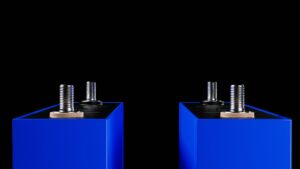Setting the Record Straight: AGM vs. Gel Batteries

Similarities between AGM and Gel Batteries:
- Both are non-spillable in nature.
- They possess deep cycle characteristics.
- Safe for use in areas with limited ventilation.
- Classified as valve-regulated lead acid batteries (VRLA) or "sealed" lead acid batteries (SLA), a maintenance-free type of lead-acid battery.
- Can be mounted in any orientation.
- Safe for transport via air or ground without any special handling.
- Both should be fully recharged as soon as possible after use.
AGM Batteries
Contrary to what some may believe, the “G” in AGM does not stand for “Gel.” AGM batteries use a fiberglass mat to wick the battery’s electrolyte between its plates. This design keeps the mat wet for the battery’s entire useable life.
AGM Battery Pros:
- Higher output and ability to handle more current compared to Gel batteries.
- Lower internal resistance enables faster charging.
- Better performance at low temperatures due to low internal resistance.
- Less expensive compared to Gel batteries.
- More popular and readily available with a wider variety of models than Gel batteries.
AGM Battery Cons:
- Should not be discharged more than 50% for a long service life (Can handle occasional discharges up to 70%).
- Gradual performance decline over time.
- Lower cycle life compared to Gel batteries. 1,200 cycles when discharged at 50%.
Gel Batteries
Gel batteries mix fumed silica and sulfuric acid. This thick, paste-like material suspends the electrolyte solution and allows for the flow of electrons between the plates.
Gel Battery Pros:
- Longer lifespan and superior deep-cycle durability allow routine discharges up to 90% with better cycle life.
- Lower self-discharge rate over time.
- A "domed" service life allows for predictable, high-performance power delivery throughout most of of the battery’s lifespan.
- Better performance at high ambient temperatures and less prone to sulfation.
- Superior cycle life. A Gel battery discharged at 30% can provide about 2,600 cycles. Even when discharged to 90%, a Gel battery still provides more cycles than an AGM battery discharged at 50%.
Gel Battery Cons:
- Lower output and can't handle as much current as AGM batteries, taking longer to recharge.
- More expensive than AGM batteries.
- Don't offer the same power capacity as AGM batteries of the same size.
- More sensitive to overcharging, which can cause irreversible damage and shorten lifespan.
- Higher risk of a thermal runaway than AGM or Flooded Lead-Acid (FLA) batteries.
- Requires correct charge and float voltages for optimal performance.
Understanding these differences can help you make a more informed decision between an AGM and a Gel Cell battery.
Final Thoughts
Gel batteries are exceedingly rare in the world of golf carts. As a golf cart owner or even someone who works in the industry, you will rarely, if ever, see a golf cart with gel batteries. Early GEM Cars from the brand’s Chrysler days are one of the few exceptions. Otherwise, the choice between AGM and Gel batteries is fairly simple. While Gel batteries shine in applications with deep discharge applications and slightly higher ambient operating temperatures, most customers looking for a maintenance-free battery solution will opt for AGM batteries over the gel. The slow charging and high cost of gel batteries make them a non-starter for most golf cart owners. Remember, proper maintenance and charging are crucial to extending the life of any battery type.
